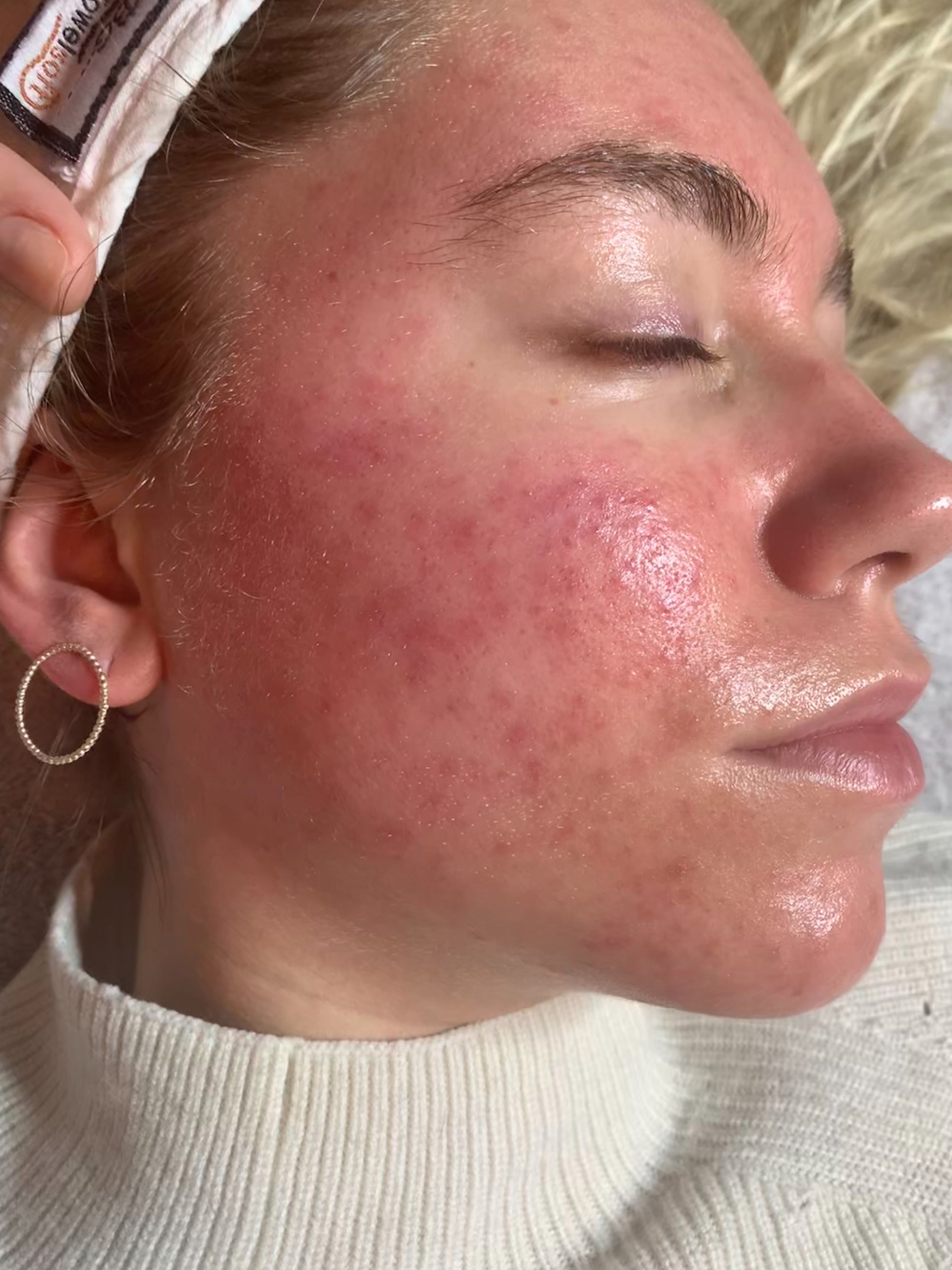This Site Is A Participant In The Amazon Services LLC Associates Program. We may earn money or products from Amazon or the companies mentioned in this post.
Microneedling can cause temporary skin darkening due to post-inflammatory hyperpigmentation. This occurs as a result of increased melanin production during the healing process.
During microneedling, tiny needles puncture the skin, triggering the body’s natural healing response and stimulating collagen production. This can lead to temporary darkening of the skin, which typically fades over time. Additionally, certain skin types may be more prone to hyperpigmentation and may experience more noticeable changes in skin color after microneedling.
It is important to use sunscreen and follow post-treatment care instructions to minimize the risk of hyperpigmentation and promote optimal healing.

Credit: www.refinery29.com
The Science Behind Skin Darkening
Microneedling is a procedure that involves puncturing the skin with tiny needles to stimulate collagen production. The science behind why skin may appear darker after microneedling lies in the process of melanin production and the body’s inflammatory response. Melanin, the pigment responsible for skin color, can be stimulated by the injury caused by the needles, resulting in temporary darkening of the skin.
This is because the body activates its defense mechanisms, leading to increased blood flow and the release of inflammatory mediators. This response can also trigger the production of excess melanin, leading to hyperpigmentation. While this darkening is typically temporary and resolves on its own, it is essential to follow post-treatment care instructions and protect the skin from sun exposure to avoid further pigmentation issues.
Understanding the science behind skin darkening after microneedling can help individuals better prepare for the potential side effects and ensure optimal healing.
Factors Affecting Skin Darkening
Skin darkening after microneedling can be influenced by various factors. One key factor is your skin type and pigmentation, as individuals with darker complexions tend to experience more noticeable darkening. Additionally, the depth of the microneedling treatment plays a role in how dark your skin may appear afterwards.
Deeper treatments can cause more inflammation, triggering the production of melanin and resulting in darker skin temporarily. Another important factor is post-treatment care. Properly following the skincare routine recommended by your aesthetician can help minimize skin darkening. Using gentle cleansers, avoiding sun exposure, and applying soothing creams can aid in the healing process and prevent excessive pigmentation.
It’s important to note that while temporary skin darkening is common, it typically fades over time as your skin rejuvenates. Consulting with a skincare professional can provide further insights and guidance specific to your skin’s needs.
Tips To Minimize Skin Darkening
Microneedling is a popular aesthetic treatment that can sometimes result in temporary skin darkening. To minimize this effect, there are a few essential tips to follow. First, it’s crucial to prepare your skin adequately before the treatment. This includes avoiding direct sun exposure and using suitable products recommended by your dermatologist or aesthetician.
These products can help prepare your skin for the procedure and minimize any potential darkening. Additionally, it’s vital to protect your skin from the sun after microneedling. Applying sunscreen with a high spf and wearing protective clothing can shield your skin from harmful uv rays, reducing the chances of further darkening.
By following these tips, you can minimize skin darkening and achieve optimal results from your microneedling treatment.
Frequently Asked Questions For Why Is My Skin Darker After Microneedling?
Why Does My Skin Get Darker After Microneedling?
During microneedling, tiny needles puncture the skin, triggering the body’s healing response. The increased melanin production may temporarily darken the skin. However, this is typically a temporary reaction that subsides within a few days to weeks post-treatment. It is important to follow proper aftercare instructions provided by your skincare specialist.
Can Microneedling Cause Hyperpigmentation?
While rare, microneedling can potentially cause hyperpigmentation. This occurs when the skin produces excess melanin, resulting in dark patches. To minimize this risk, it is crucial to choose a certified professional, follow proper pre and post-treatment care, and protect the skin from excessive sun exposure.
Does Microneedling Help With Skin Lightening?
Microneedling itself does not directly lighten the skin. However, it can enhance the efficacy of topical treatments and serums that target hyperpigmentation. By creating tiny channels in the skin, microneedling allows these products to penetrate deeper, leading to better results in lightening dark spots and promoting overall skin rejuvenation.
Conclusion
After understanding why your skin may appear darker after microneedling, it is essential to remember that this is a temporary response. The increase in melanin production, caused by the skin’s natural defense mechanism, can result in a darker complexion. However, this is only a temporary side effect that will fade within a few days or weeks post-treatment.
It is crucial to collaborate with your skincare professional to properly care for your skin during the recovery phase. Applying sunscreen, moisturizing, and avoiding sun exposure will contribute to a faster fading of the temporary skin darkening. Microneedling is a highly effective procedure for improving skin texture, reducing scars, and stimulating collagen production.
So, embrace the temporary change in skin tone as a sign that your skin is healing and rejuvenating, and soon you will enjoy the desired benefits of smoother and more youthful-looking skin.